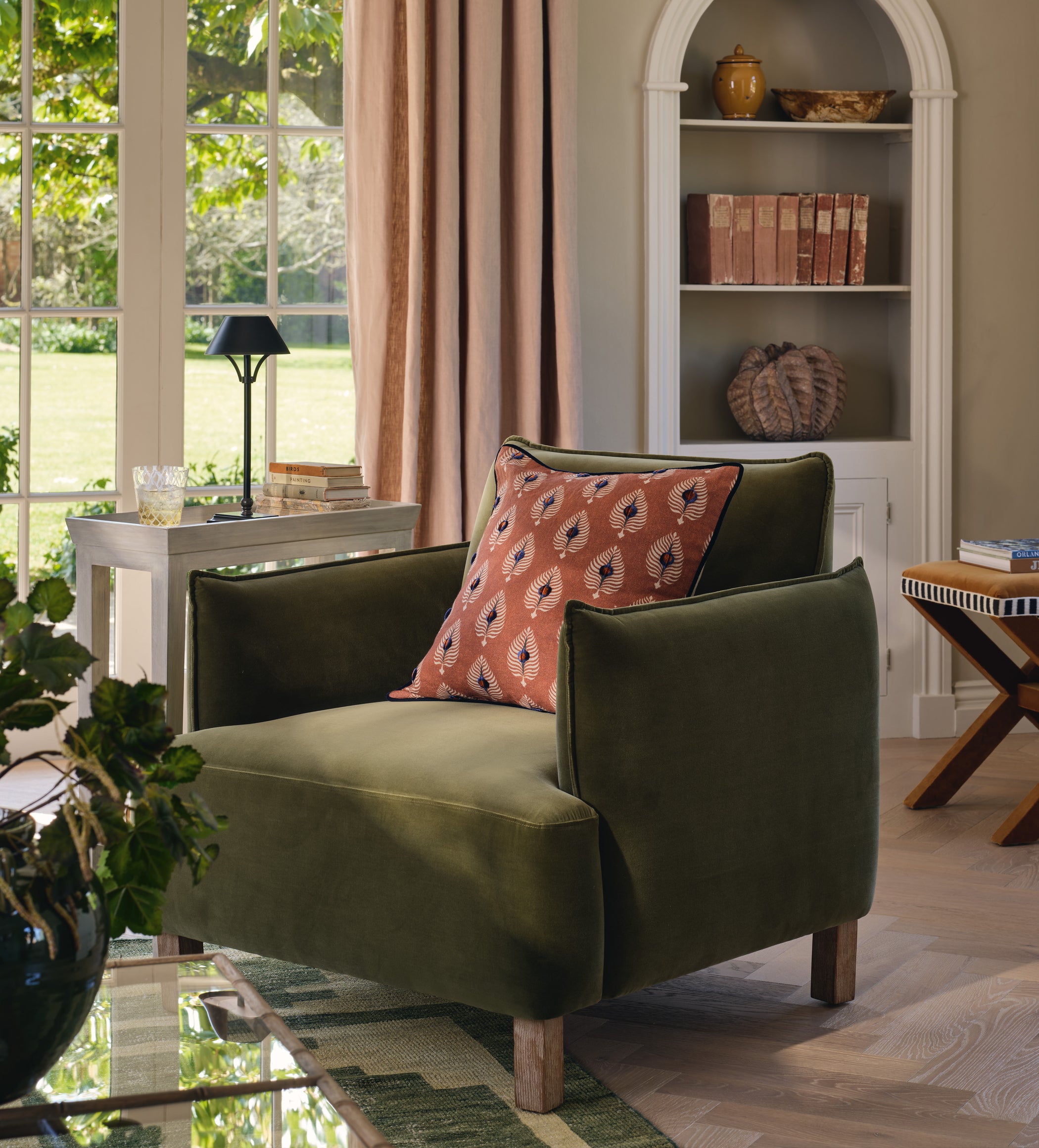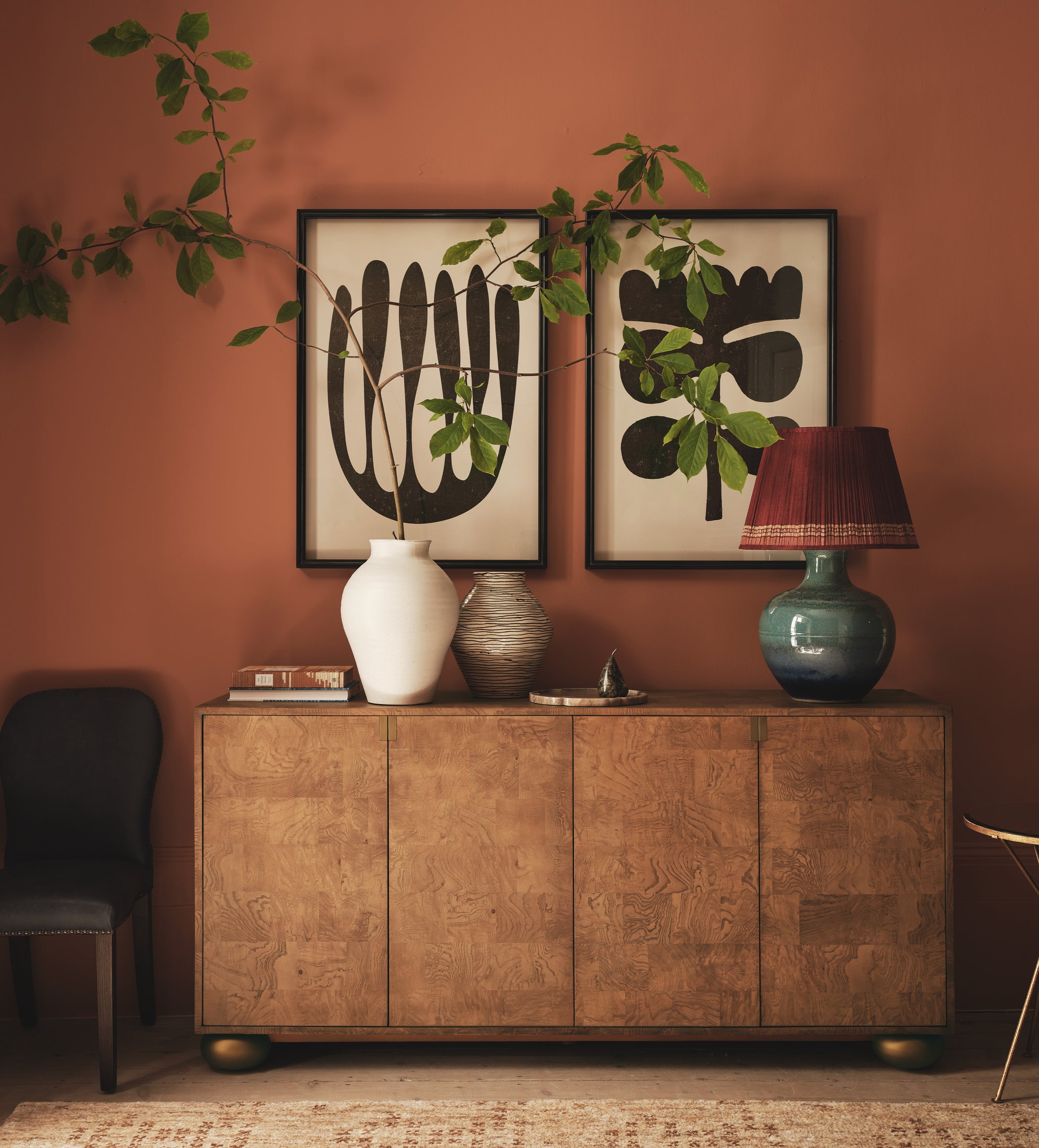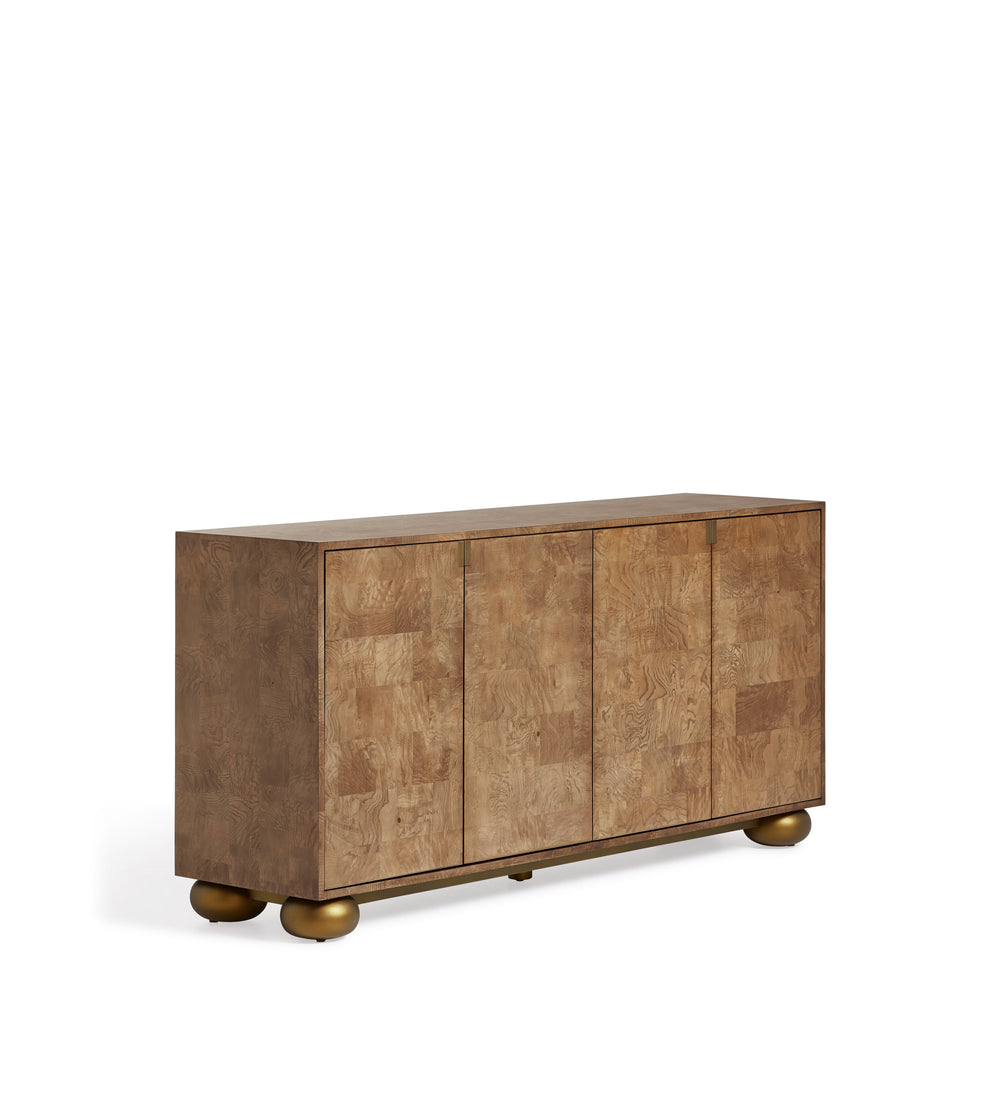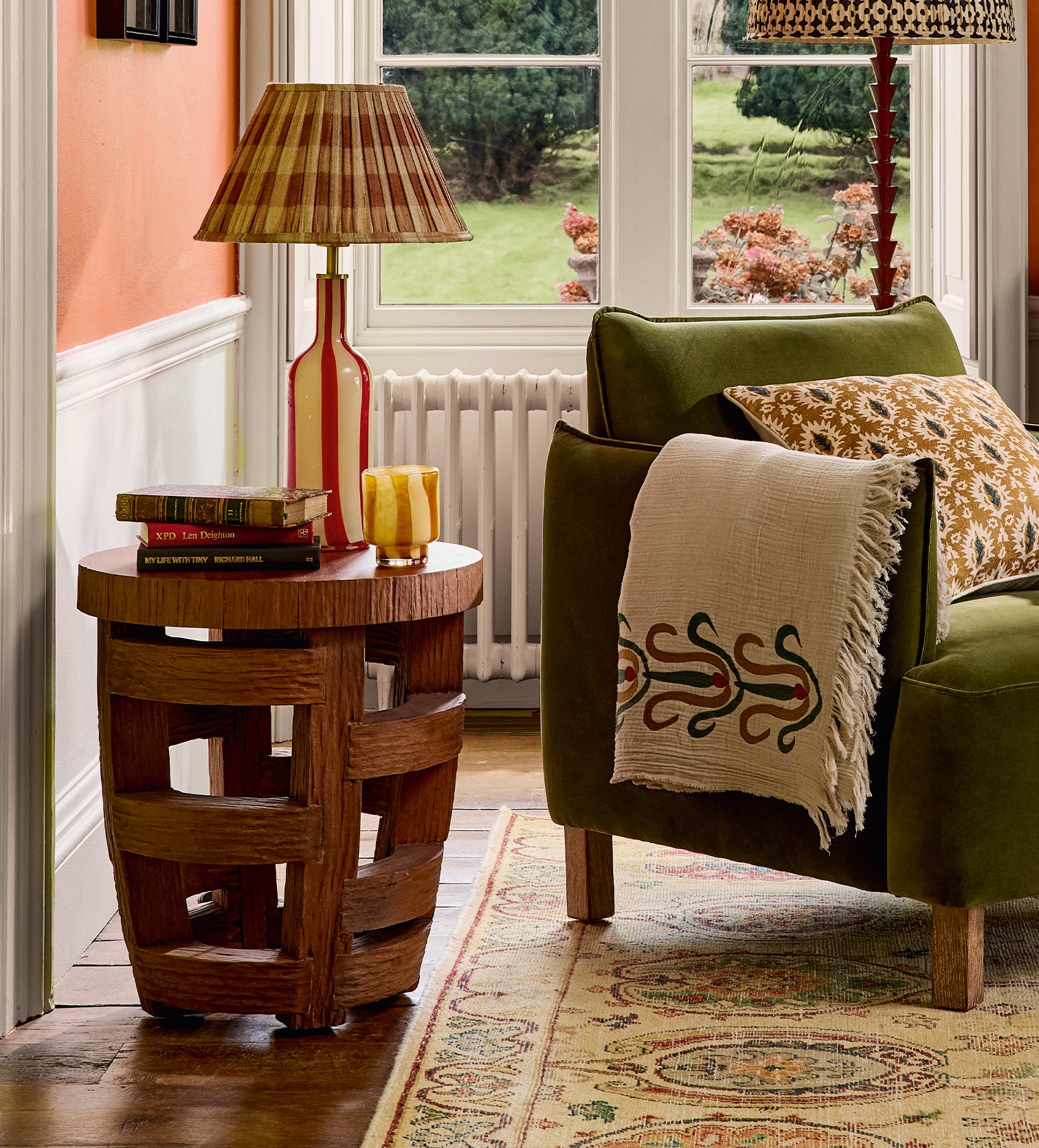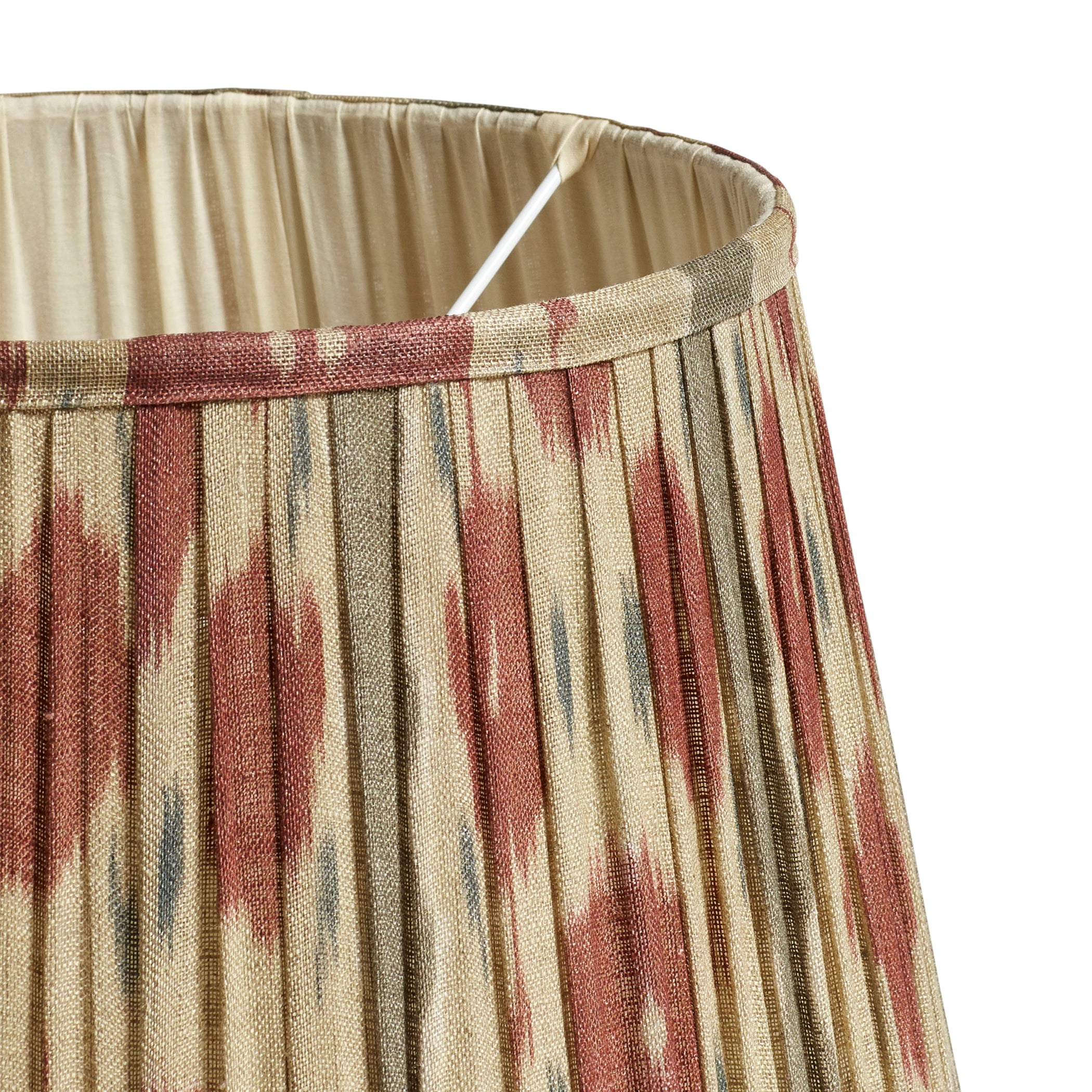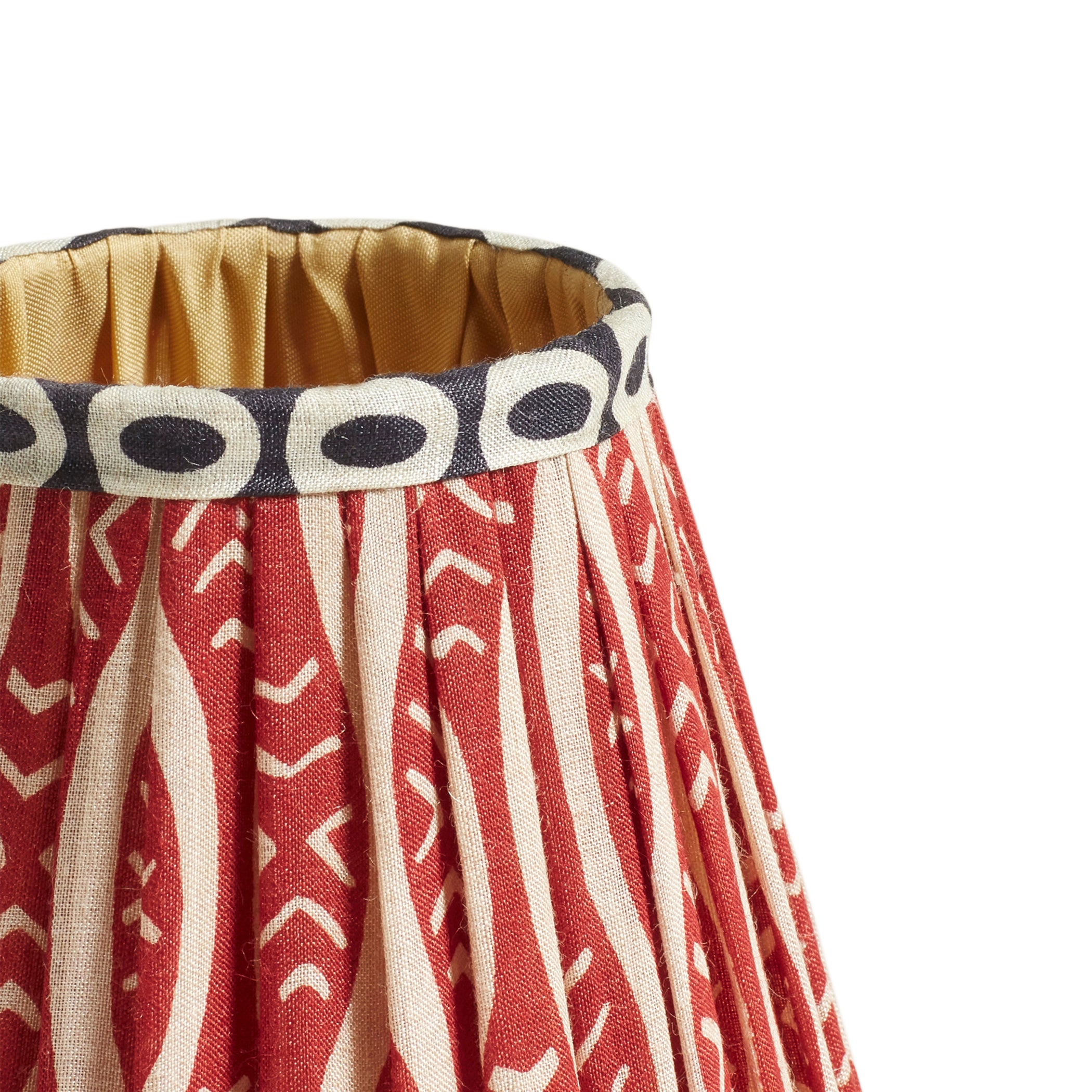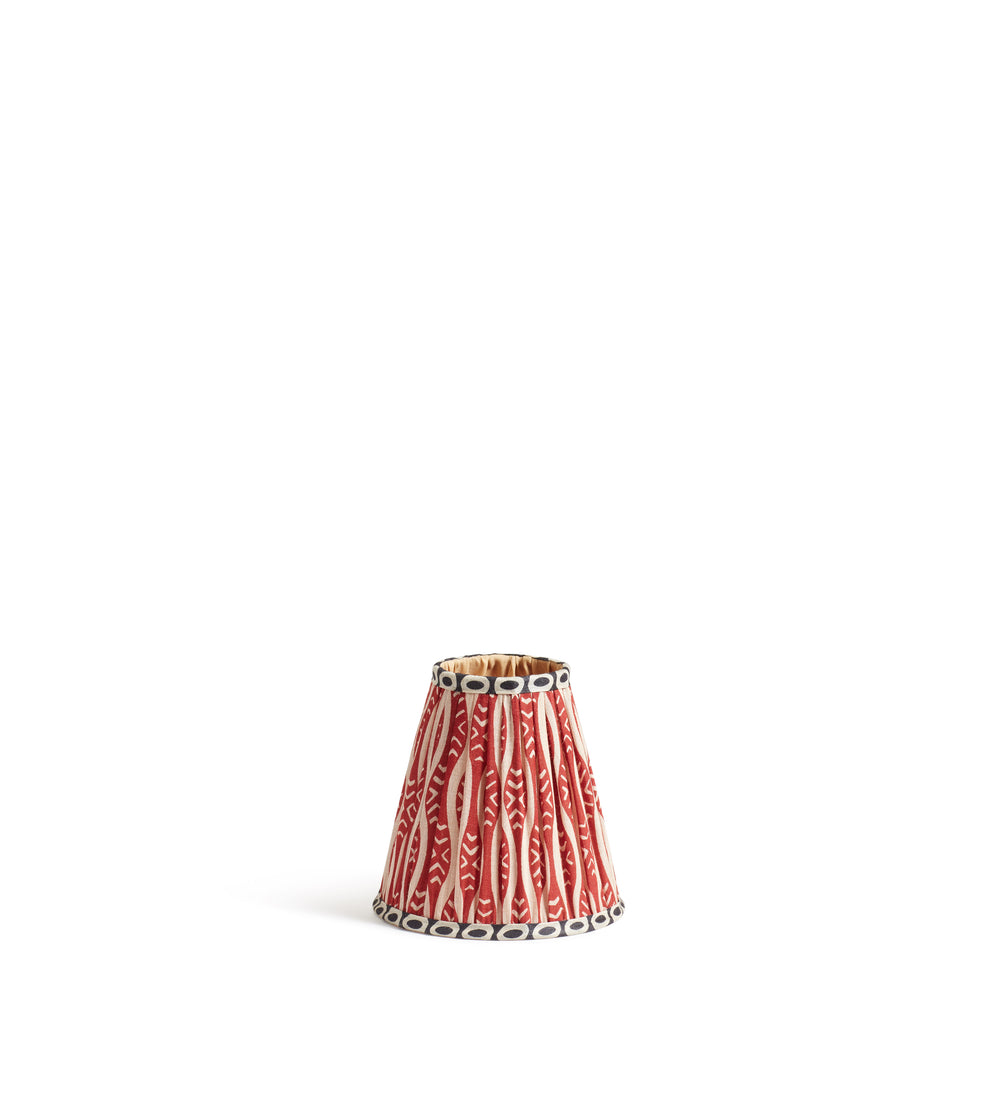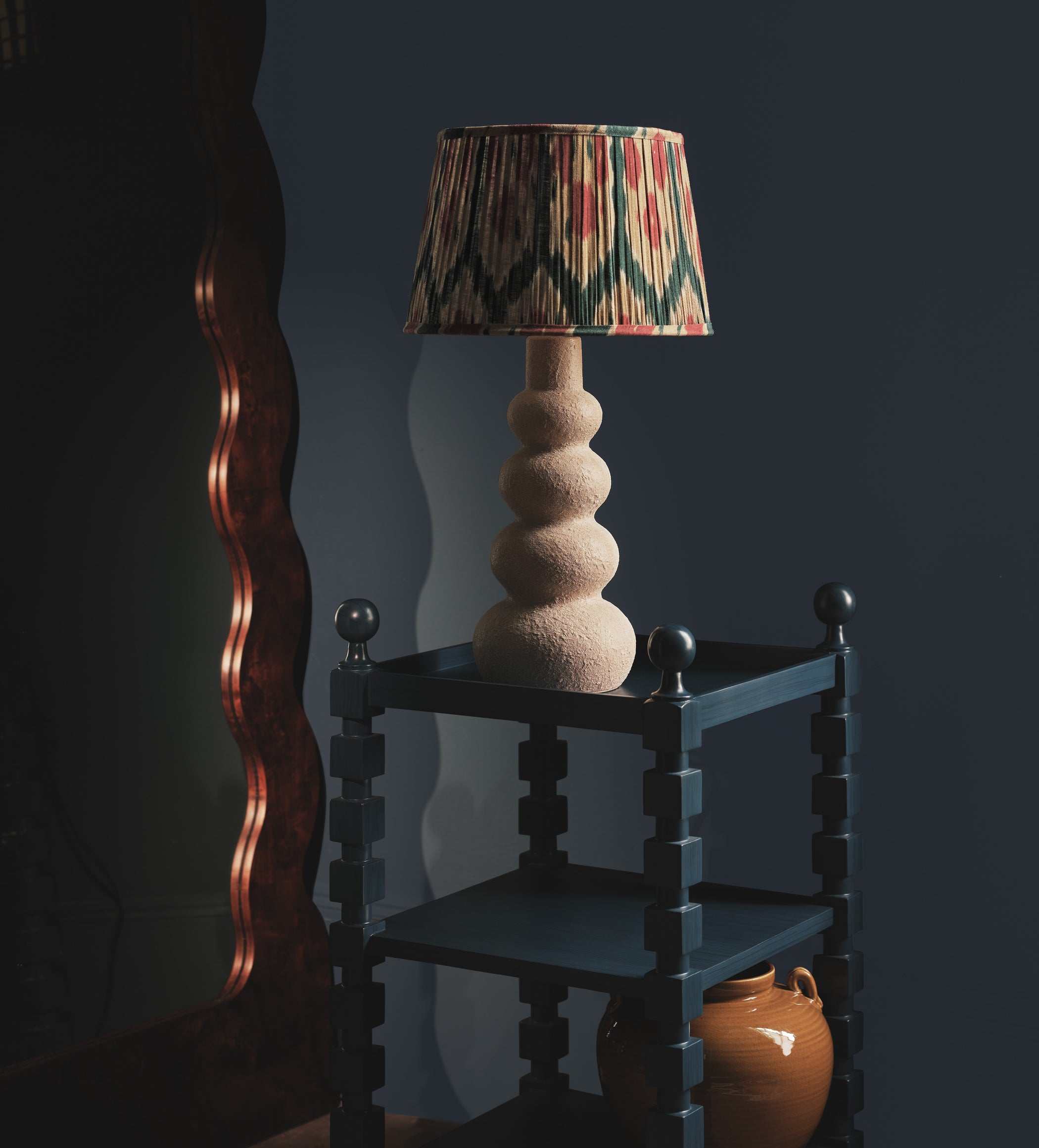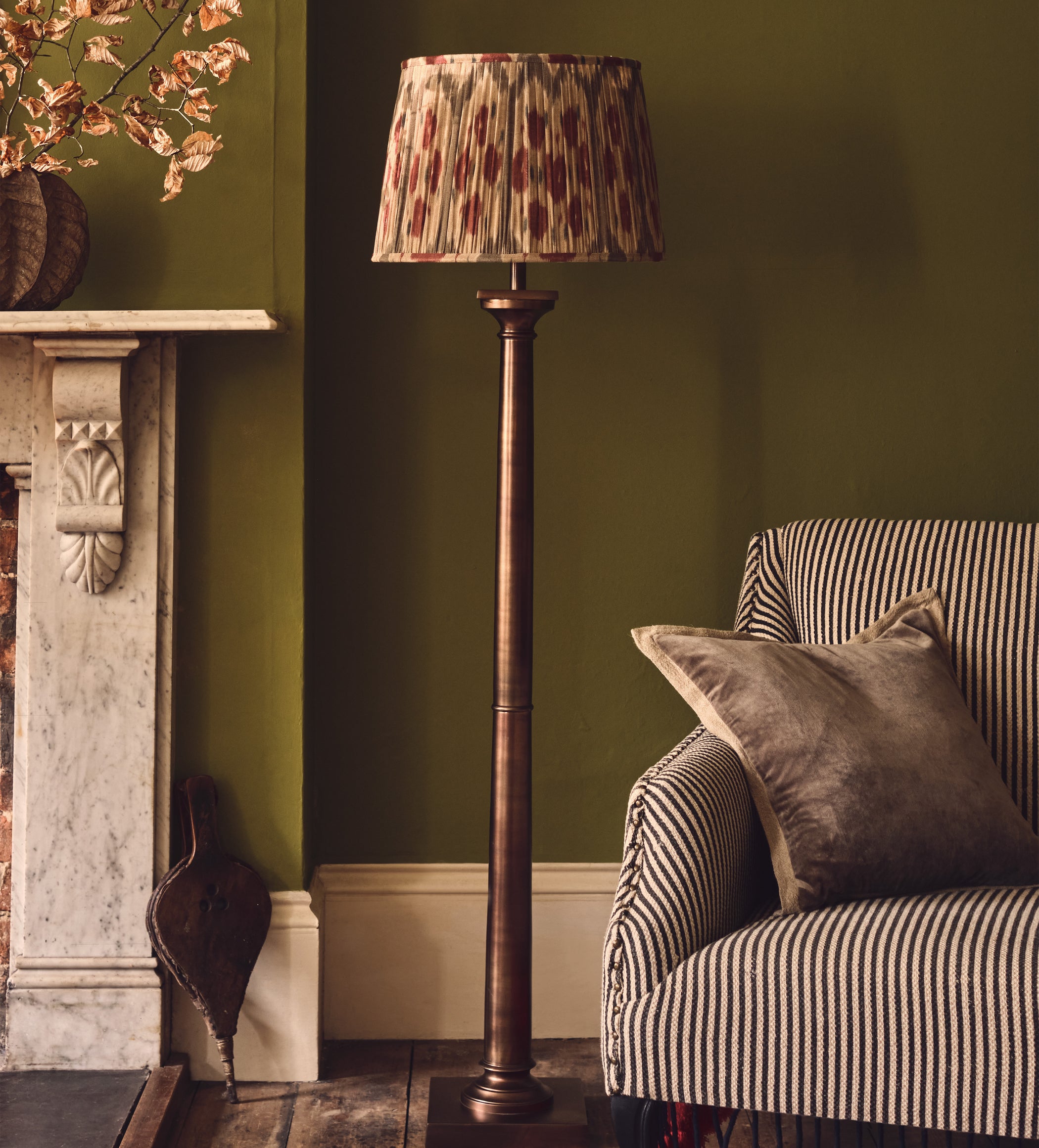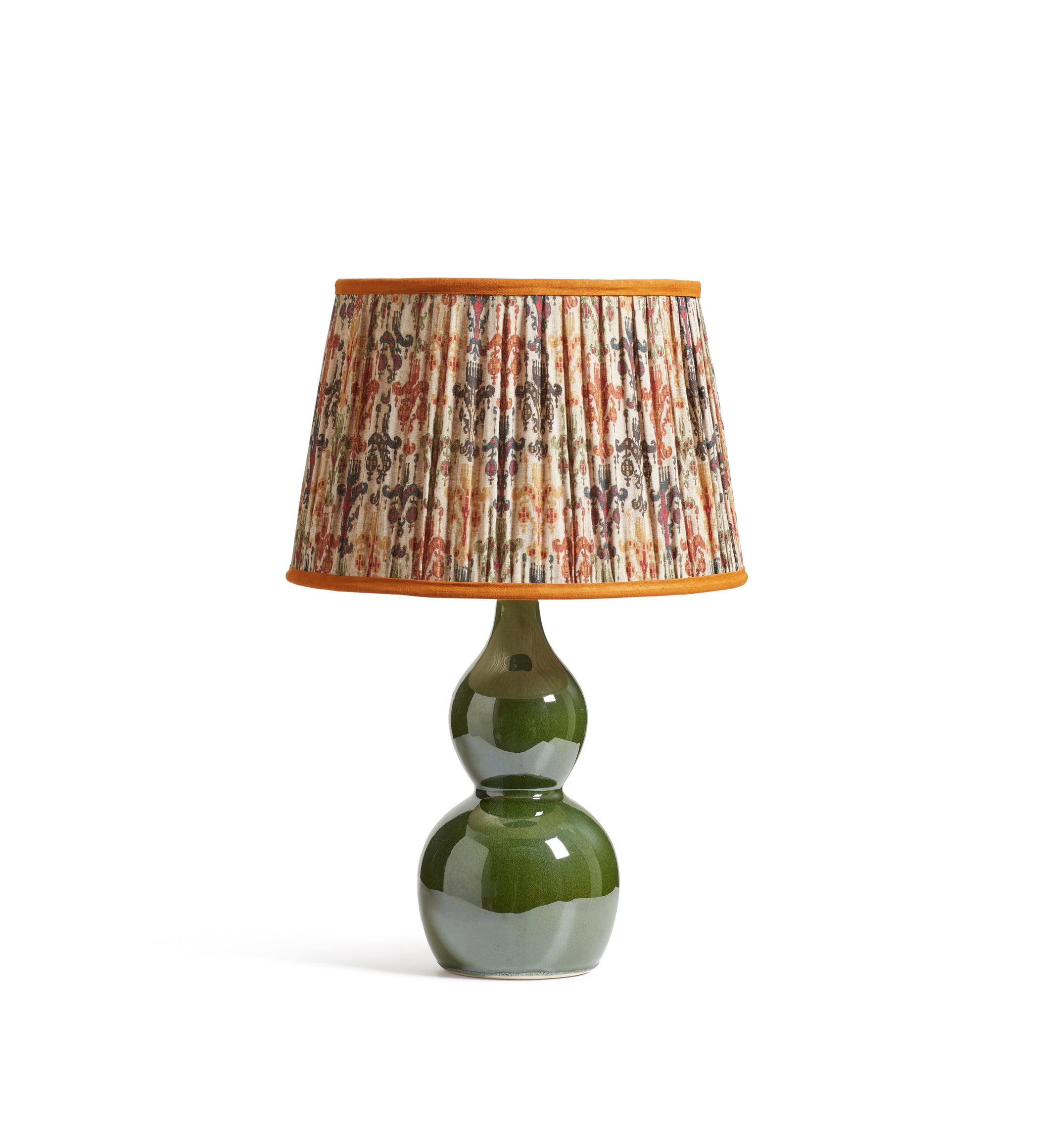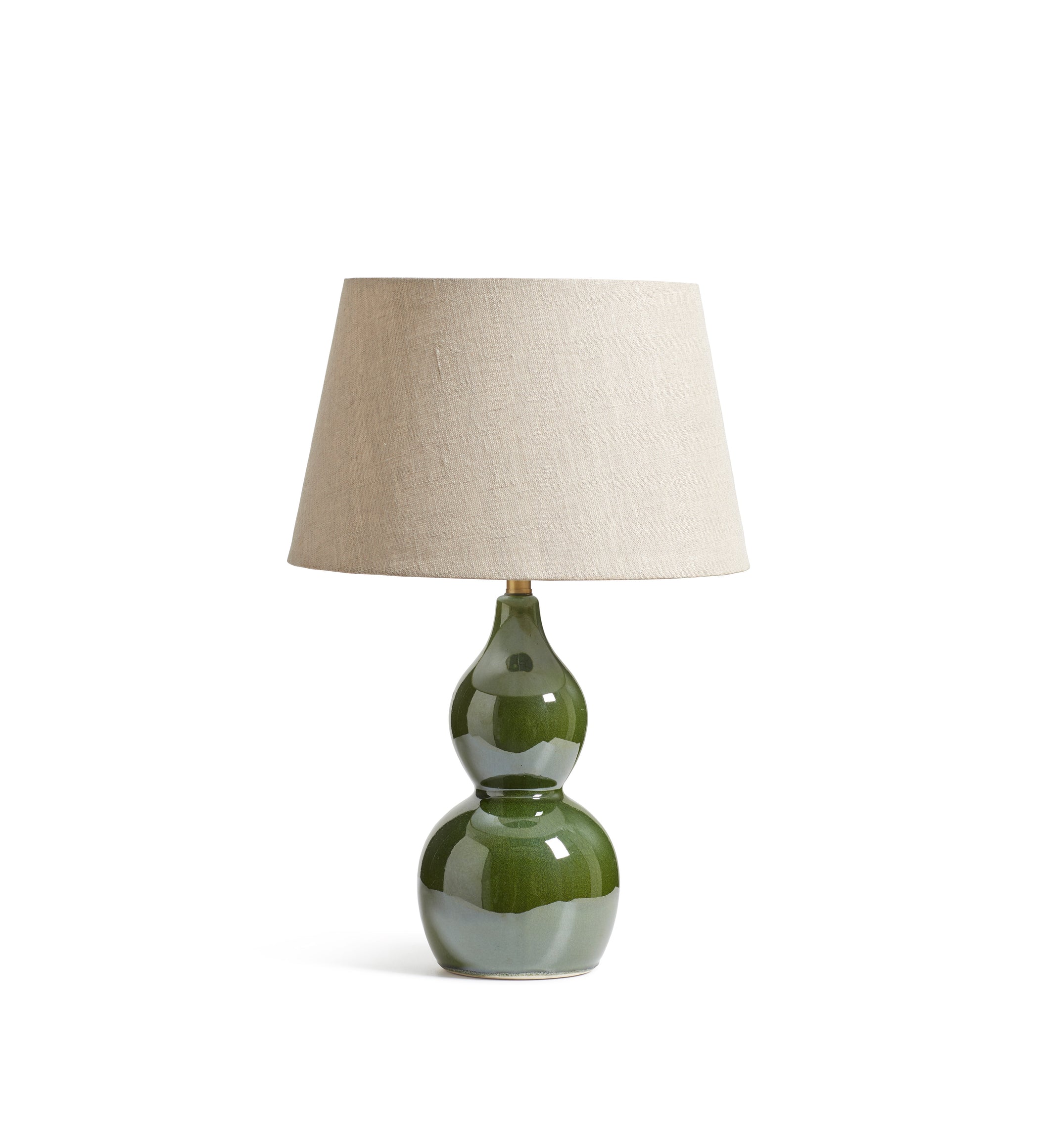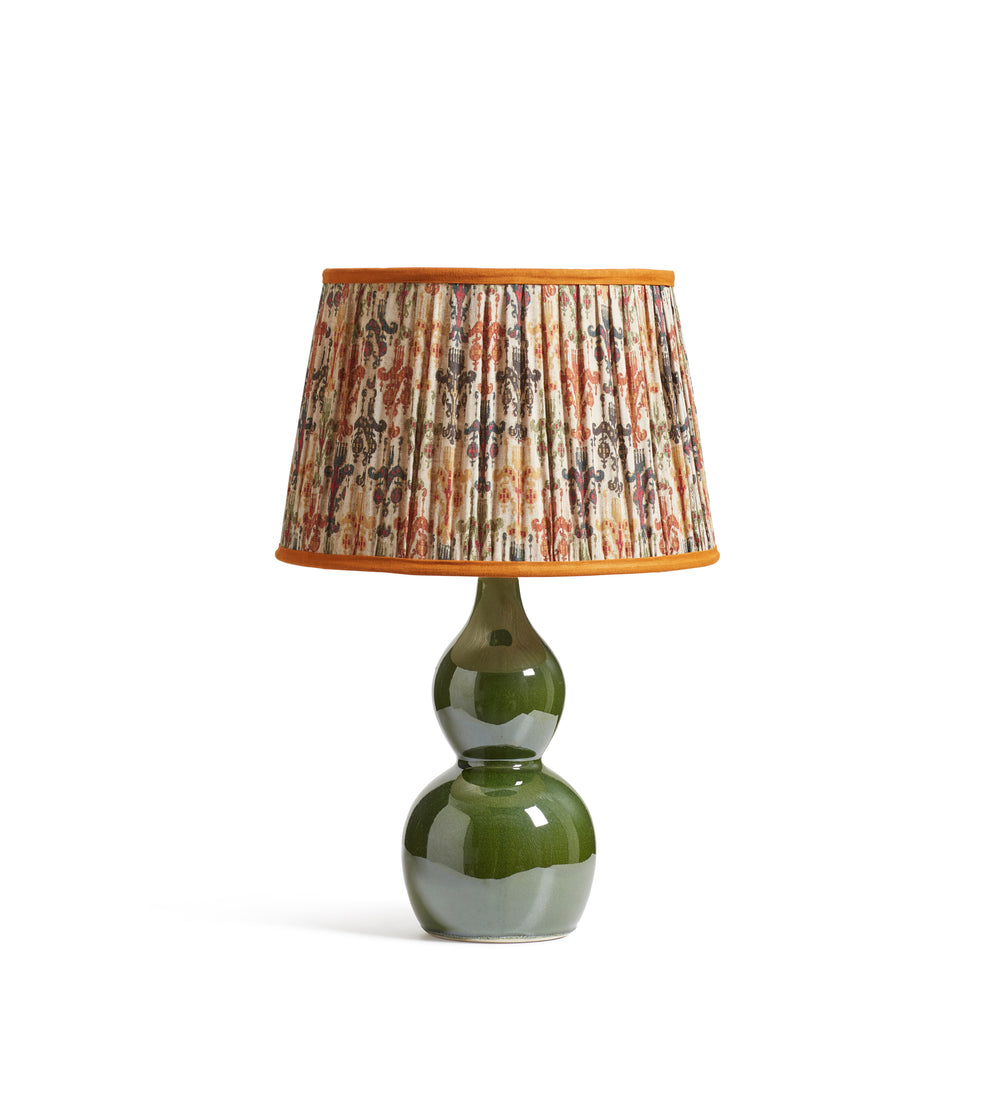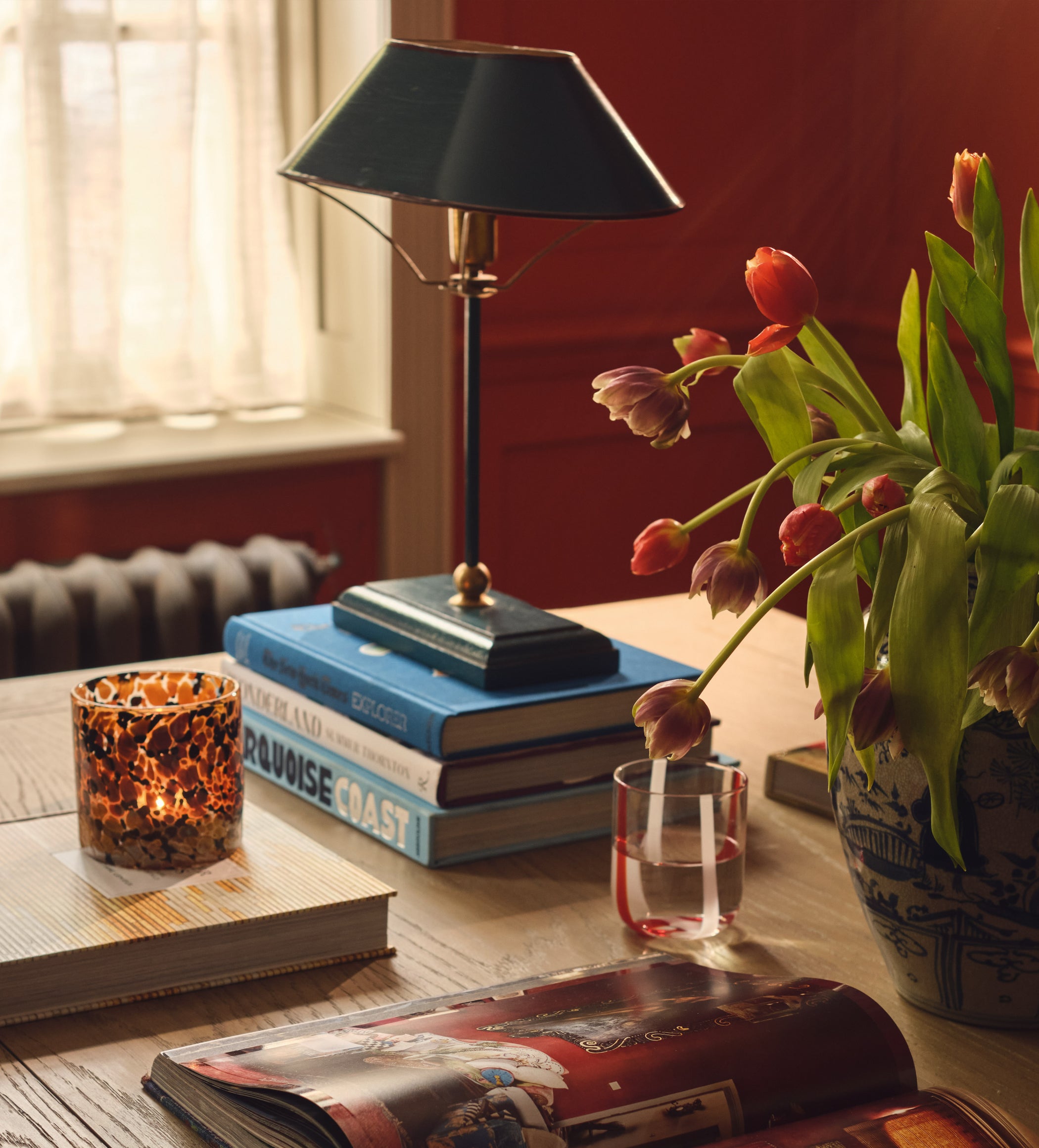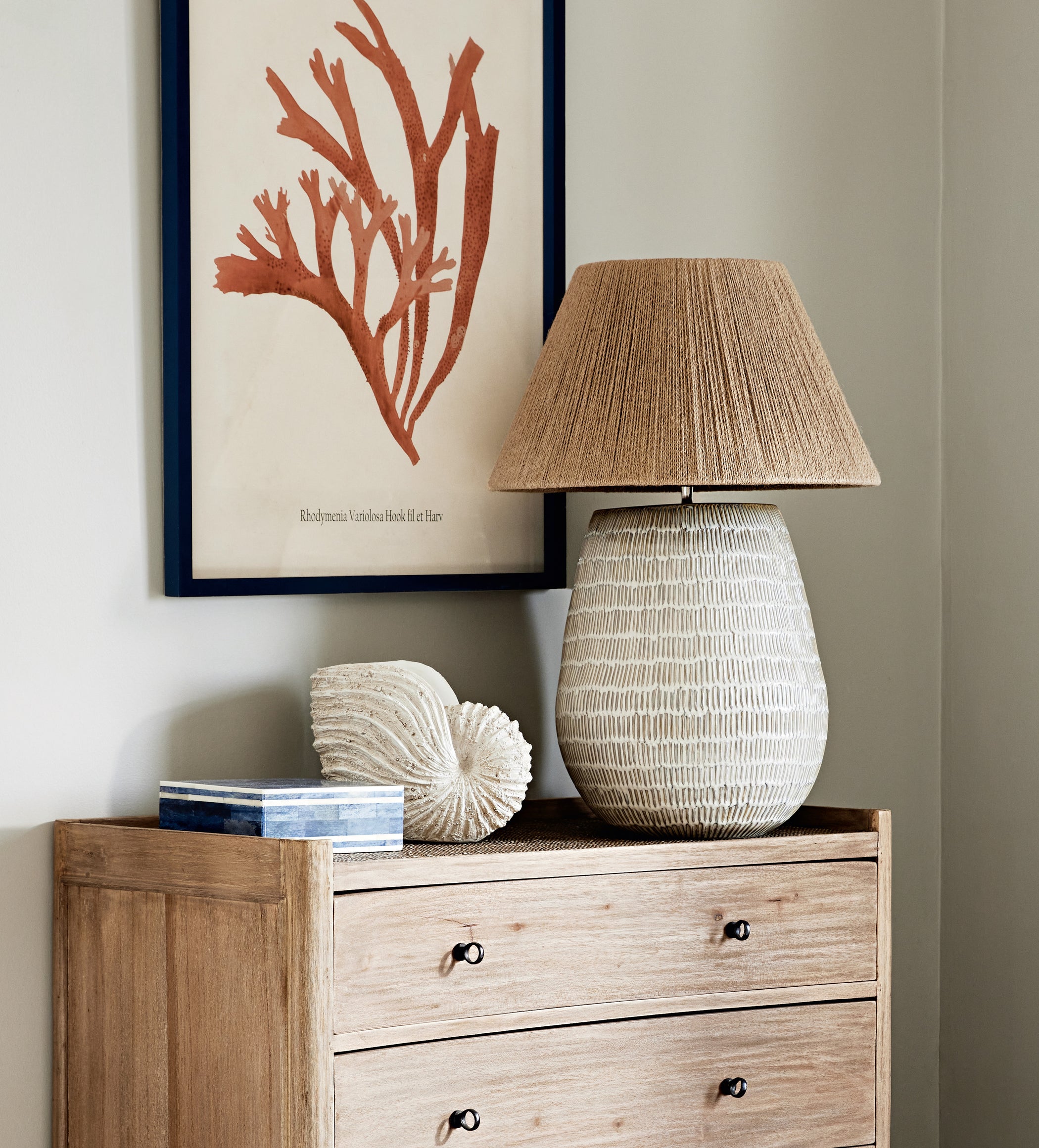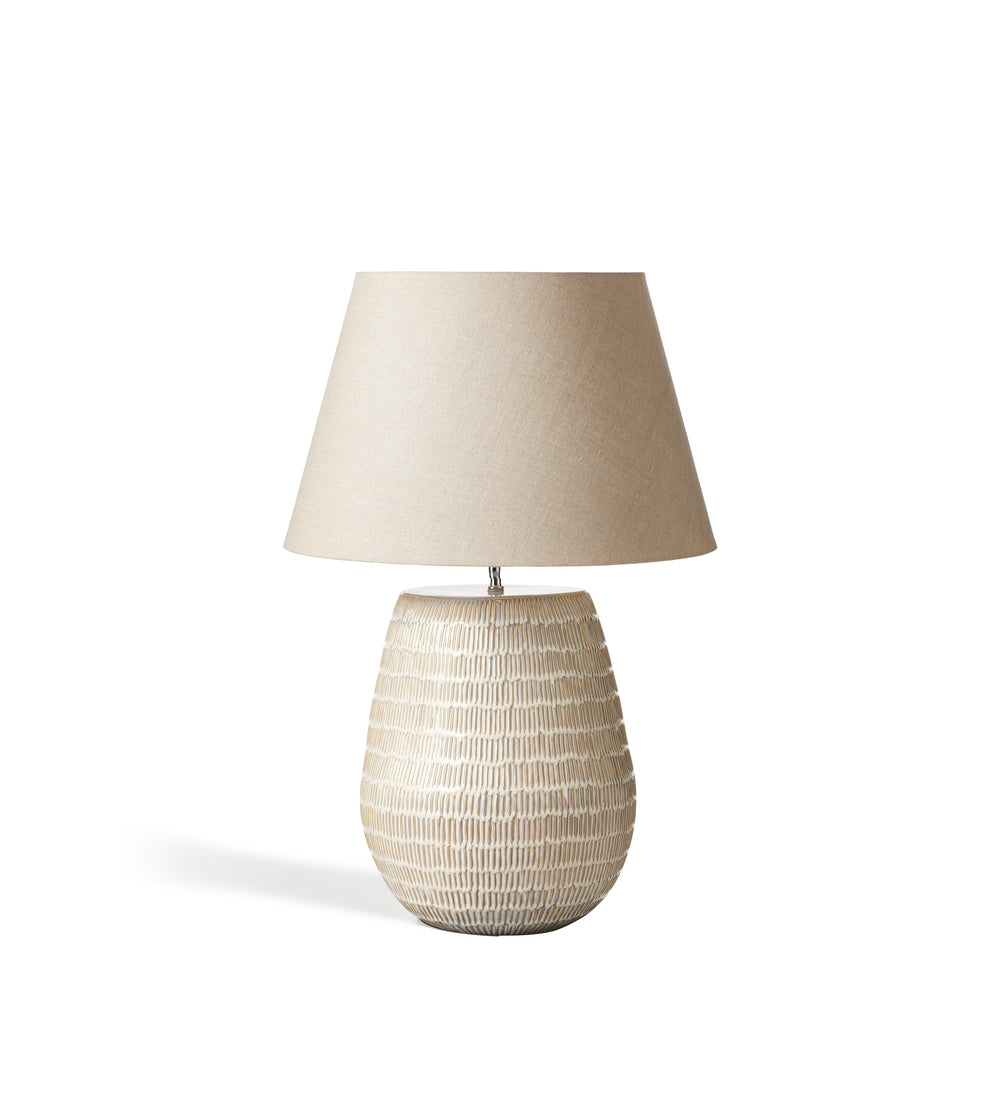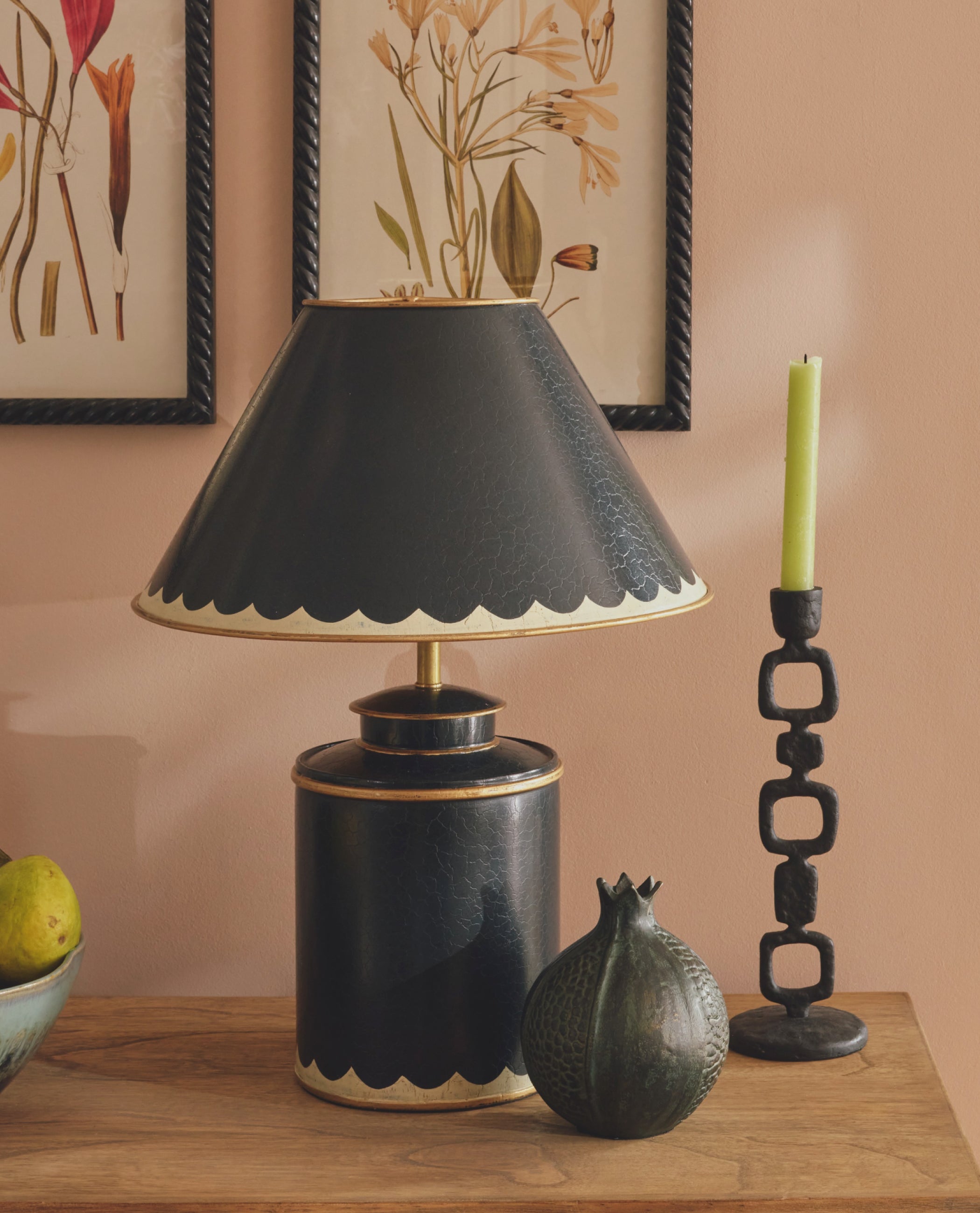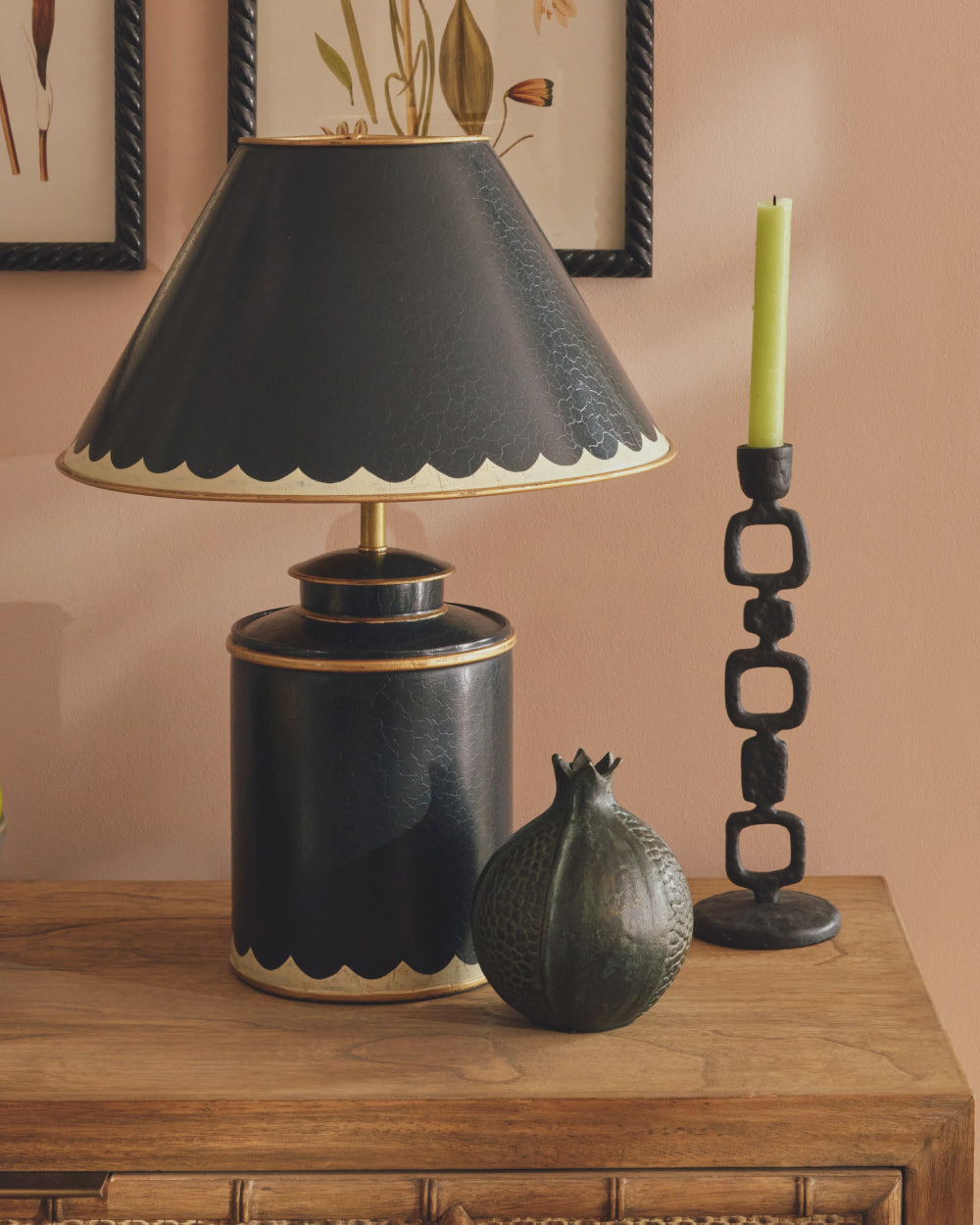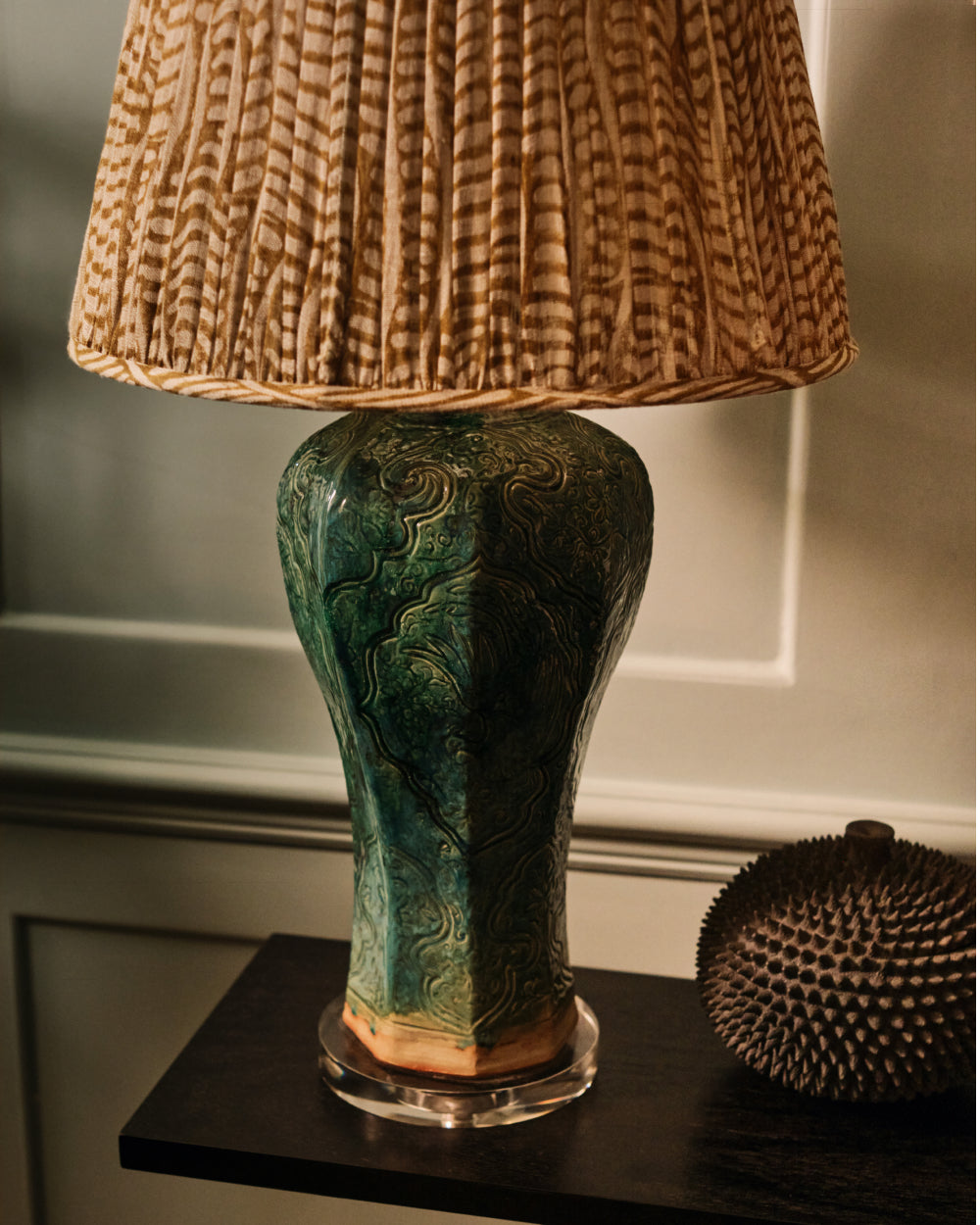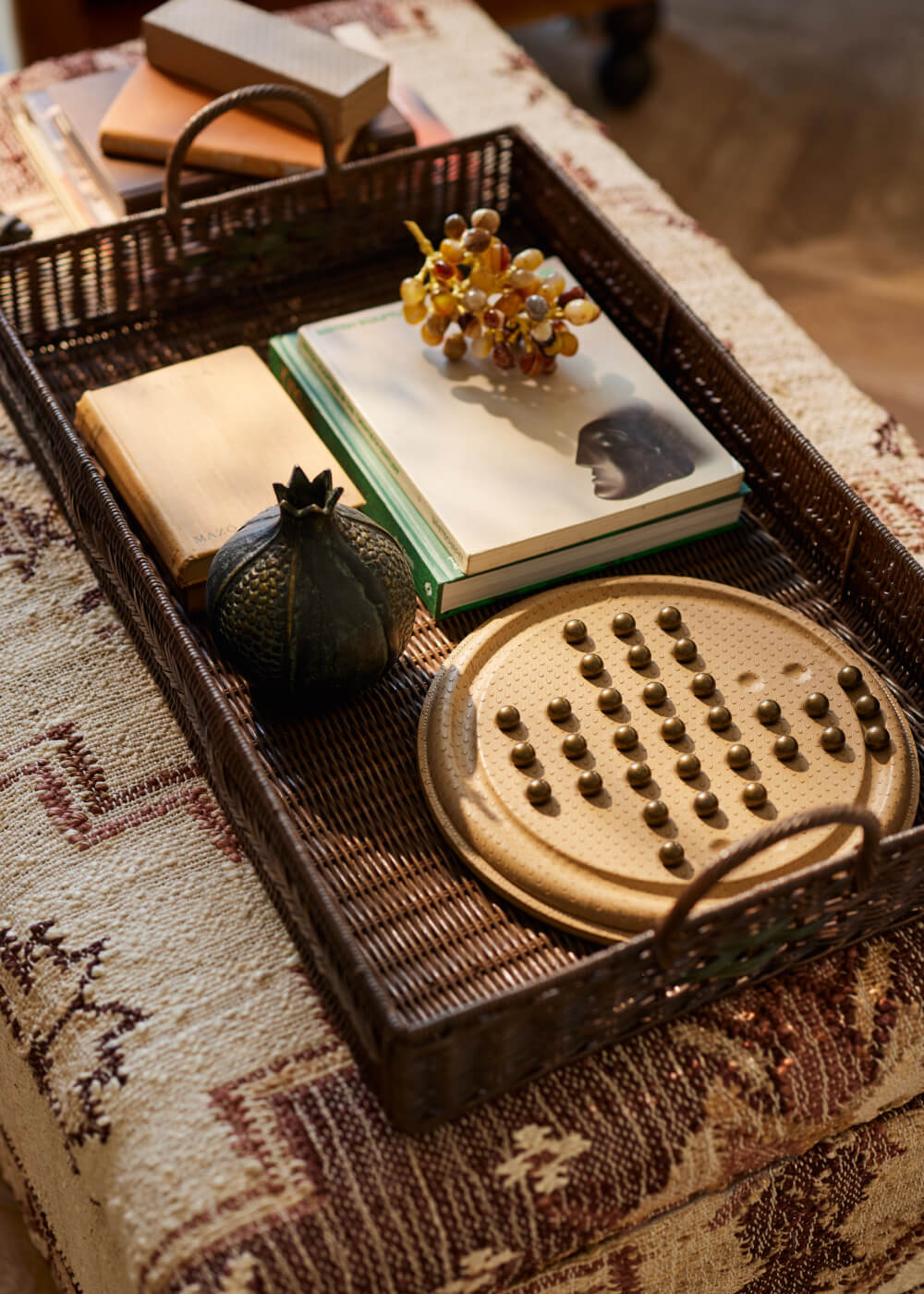After months of searching, you’ve found the lamp base that has everything you’re looking for. Everything, that is, except the lampshade to finish it off. Now you’re entering a whole new territory, questioning how to measure a lampshade to ensure that it will fit both the base and the scale of the room, as well as throw the right amount of light for the atmosphere you want to create. Yes, navigating the world of lamps and lampshades can be a tricky business. Where do you begin? There is the option to go through every single lampshade and try it out on the lamp but, not only is that time consuming it’s also impractical. Aside from anything else, if you’re buying online it’s not physically possible. Worry not, however – we know a fair few things about how to measure a lampshade, so follow along as we guide you towards a design that will fit your lamp base (and style) perfectly.
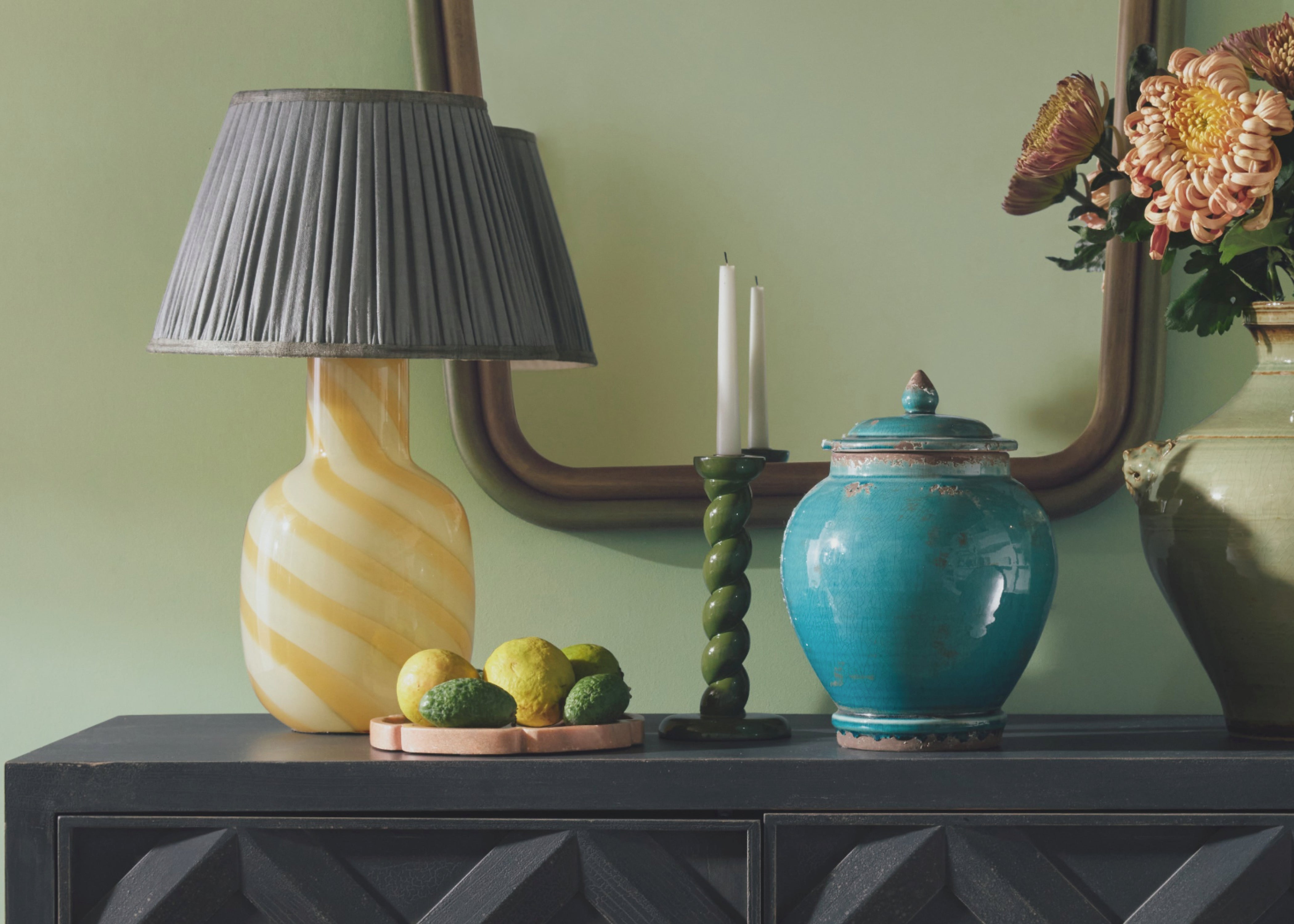

Published 13 February 2025 | Last Modified 7 May 2025 | OKA Correspondent
How to Measure a Lampshade

What is the best size lampshade for a table lamp?
As with all elements of a decorating scheme, getting the proportions right for a lamp-lampshade combination is vital; a table lamp shouldn’t be dwarfed by a giant shade or unbalanced by a small one.
To find the best size lampshade for a table lamp, start by measuring the height of the lamp base itself, using a tape measure (or ruler). When we say height, we mean from the bottom of the lamp base to the bottom of the rod – the rod and the bulb holder should not be included in this measurement.
“The golden rule for table lamp lampshades is that their width should be equal to the height of the lamp base.”
Featured in this article
Once you have the height, it’s pretty simple: the golden rule for table lamp lampshades is that their width should be equal to the height of the lamp base. If your lamp’s dimensions are between two sizes of lampshade, choose the larger of the two as it looks better proportionally, and will distribute more light.
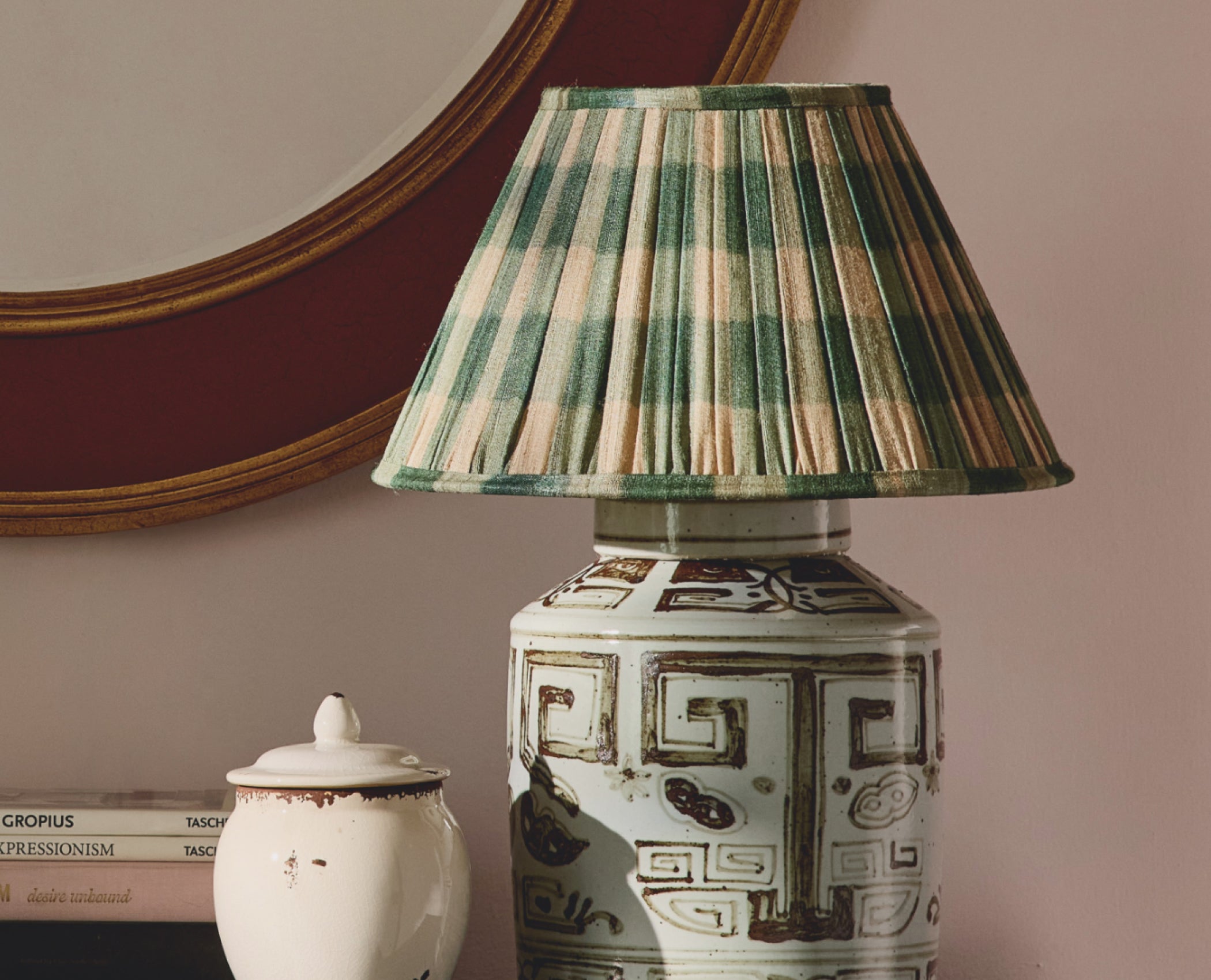
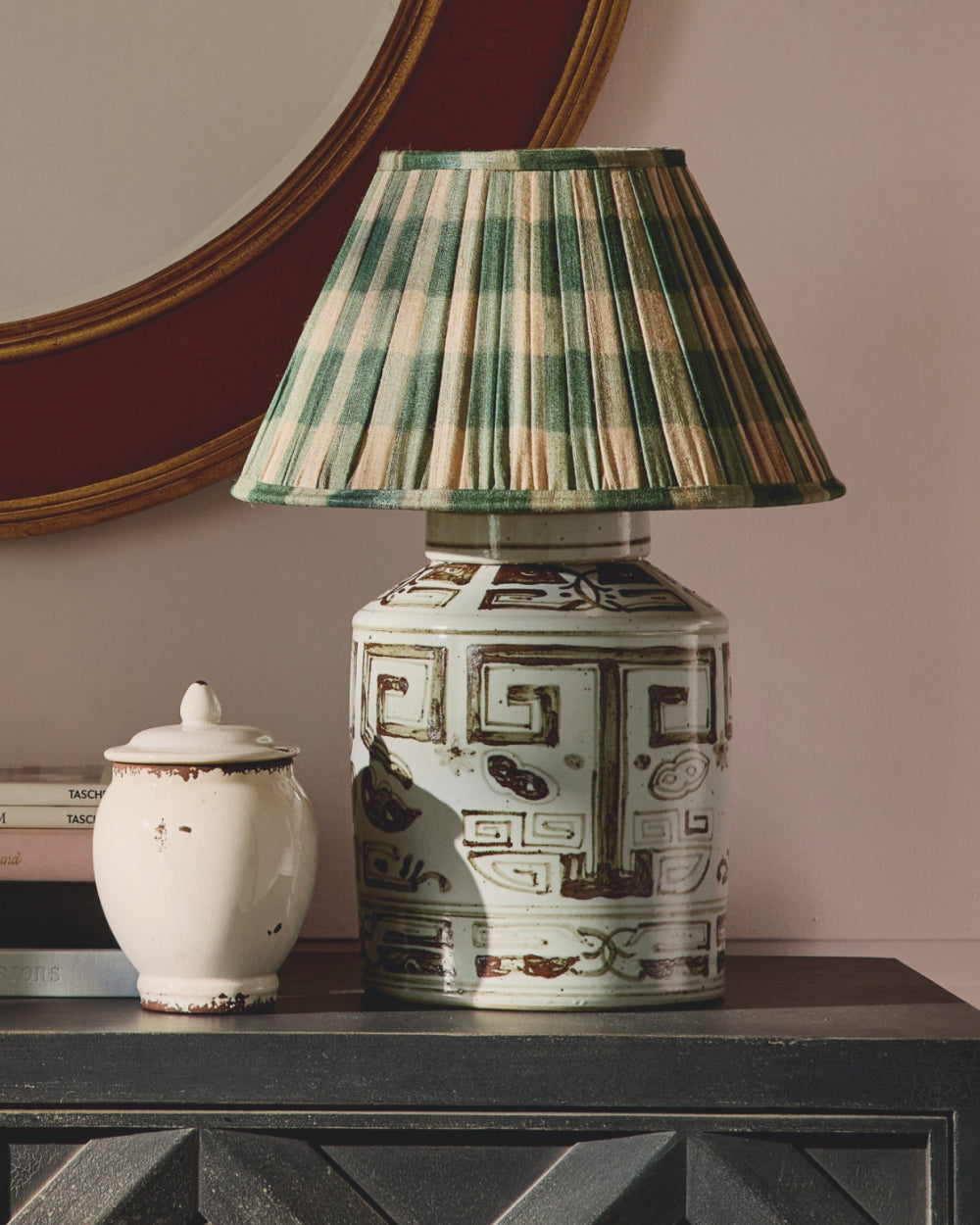


What size lampshade is best for a floor lamp?
As floor lamp designs are often tall and narrow, they work well with drum, empire, rectangular or square lampshades. In terms of the size of shade, however, the maths are marginally more complicated than the measurements used to determine a table-lamp pairing.
To determine what lampshade size you need for your floor lamp, measure the height of the lamp base – from the bottom all the way to the top of the bulb rod – then divide by four. This will give you an approximate height for the shade itself. Don’t forget to take into account how much room you have around your shade, as this will determine the width of the design. Remember, you can always go a size down if it makes the space feel tight, or it looks too close to other pieces of furniture – trust your eye.
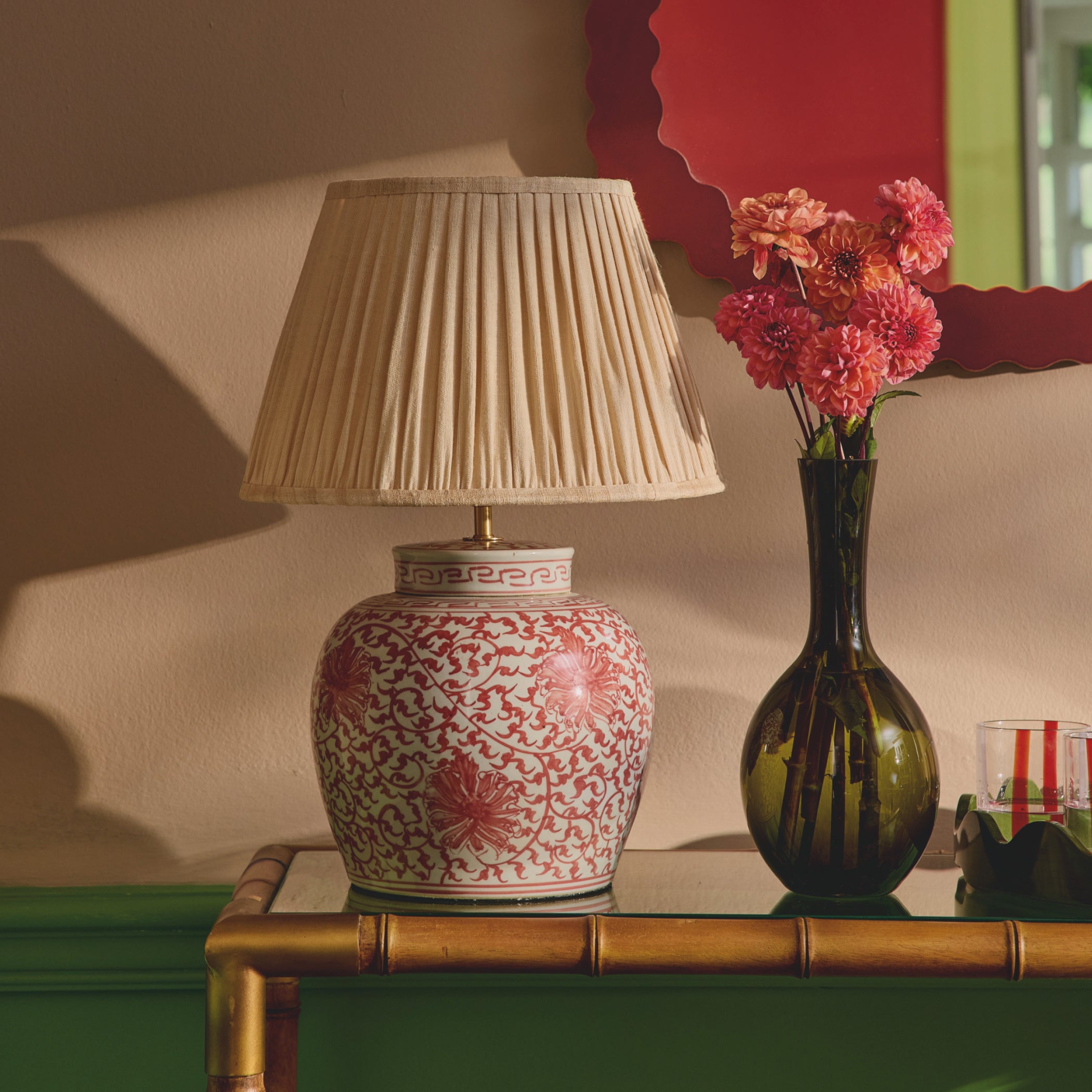

Advice
Table Lamps vs Floor Lamps: Which Are Best for Lighting?
Our homes are our havens, and lighting can make a big impact on the way they feel. It’s often the first thing we think of when we enter a room, when we flick a switch, but the last thing we think of when decorating a room
Mini Grisewood Wireless Lamp and Shade - Brown
Handmade
£150.00
Grisewood Lamp and Shade - Petrol
Handmade
£185.00
Mini Grisewood Wireless Lamp and Shade - Burnt Caramel
Regular price
£150.00
Sale price
£75.00
-50%
Kinzig Table Lamp - Taupe
Regular price
£225.00
Sale price
£56.00
-75%
Sold out
How high (or low) should my lampshade sit?
It may seem like a silly thing to consider, but the height at which a lampshade sits on a lamp base can totally alter its effect, visually. As a general rule, the perfect sized lampshade hides the fittings underneath without encroaching upon the lamp base itself; in short, the shade should not take away from the design of the base.
Lampshade style: where measurements and aesthetics meet
Now you’ve worked out how to measure a lampshade to land the correct size, you need to decide on the right shape. From the classic gently angled lines of an empire shade to the more modern rectangular style, there’s a wide selection to choose from. If too much choice is the enemy of decision making, apply this thought: as a general rule of thumb, you should aim to mirror the shape of the base in your lampshade. So, if the base is straight, square or rectangular, it’s best if the lampshade reflects those lines – opt for a design that’s appropriately square or rectangular as well. If the base is tapered or round, a good option is a lampshade that is also sloping or rounded – think empire, drum or cone styles. Column lamps are the exception to the rule: they suit any shape of lampshade.
Beyond this, the other style features of a lampshade will also make a difference to how it fits a space – visually, as much as in terms of size. There are a few things you may want to consider, from colour and pattern choices, to the type of material the shade is crafted from.
What about the width of a lampshade – does that matter?
While the height of a lampshade is impacted by the design of the base, its width is often determined by the size of your space, and the location of the lamp itself within it. Consider where you will be positioning your lamp in the room – will there be plenty of space around it, or will it be in close proximity to a wall, a piece of furniture or placed near a well-used route through the room? If space is limited, it makes sense to choose a lamp base with a narrow profile and pair it with an equally narrow shade – that way it’s less likely to get knocked or damaged.
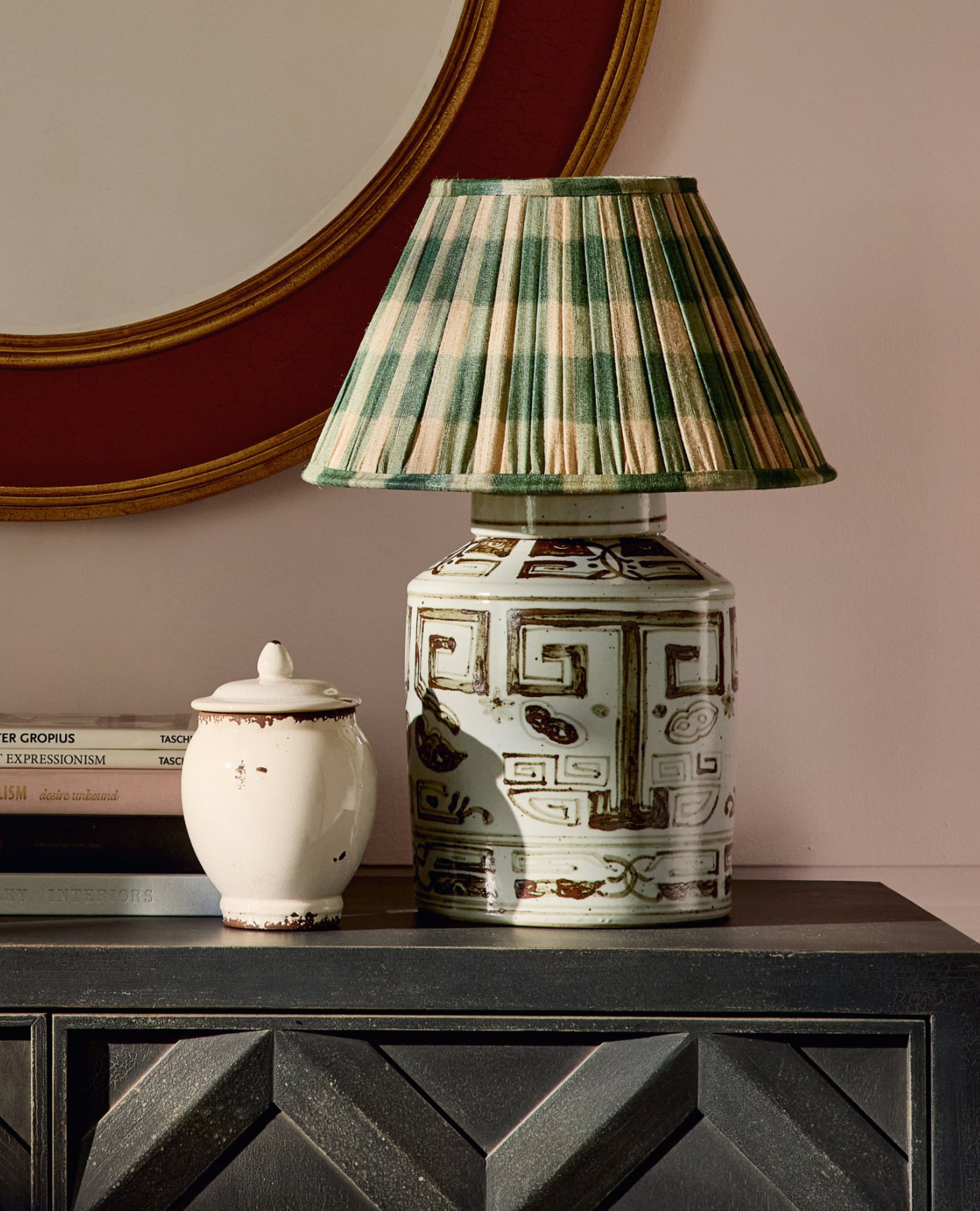
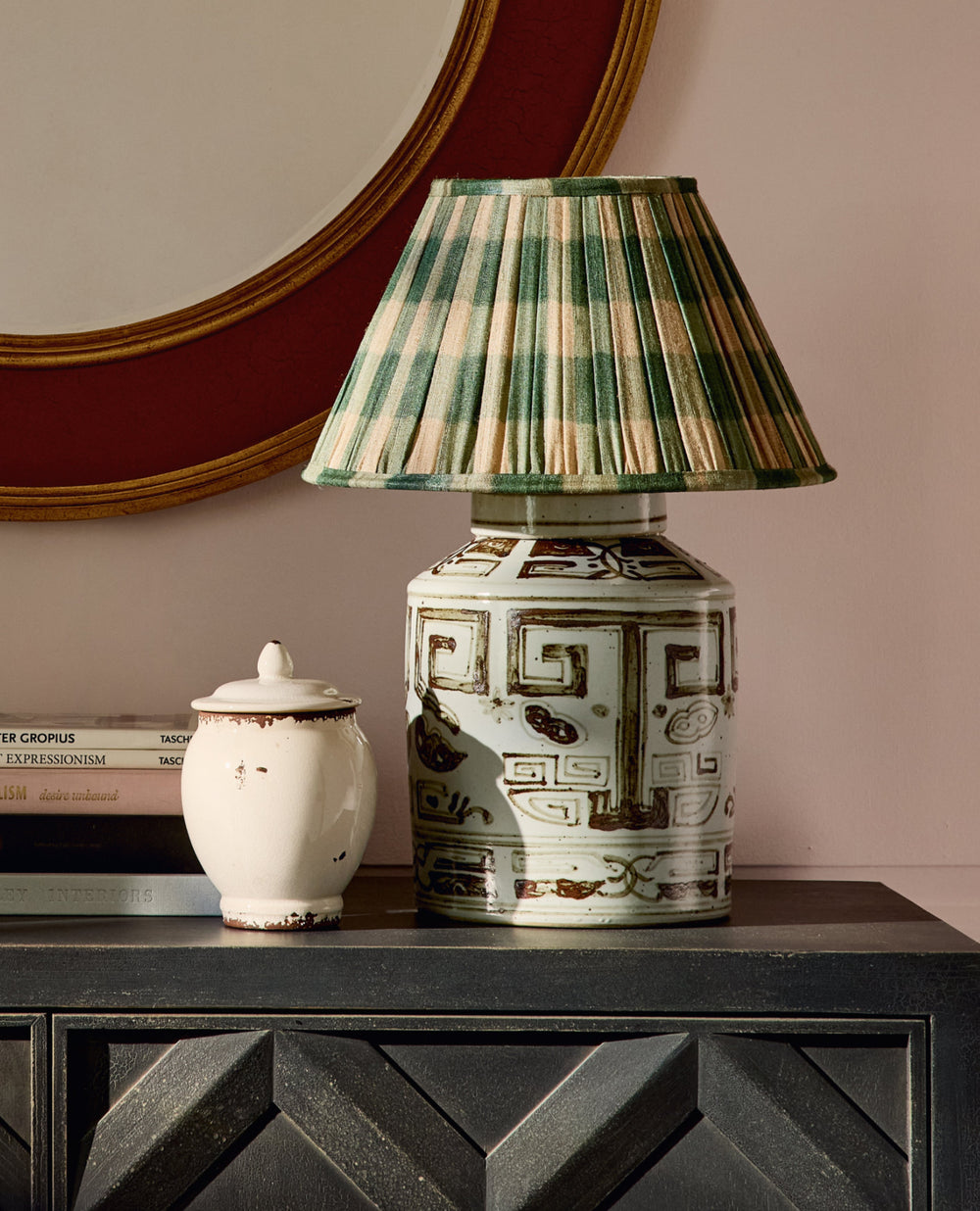
How to Choose a Lampshade: The Ultimate Guide
Interested in more inspiration?
From tips and tricks to decorating advice and expert know-how, we've got plenty of bright ideas for the home and garden.

25 November 2025
Pockets of Christmas: Simple Christmas Decorating Ideas
In the words of our Co-Founder and Creative Director, Sue Jones, “Whether you go all-out by decorating the whole house...

11 November 2025
A Guide to Styling Your Christmas Table
At Christmas, the table is more than a place to eat – it's where memories are made. From the first...

5 November 2025
The OKA Christmas Gift Guide 2025
It can be hard to know what to buy loved ones every year, whether friends or family, especially those who...
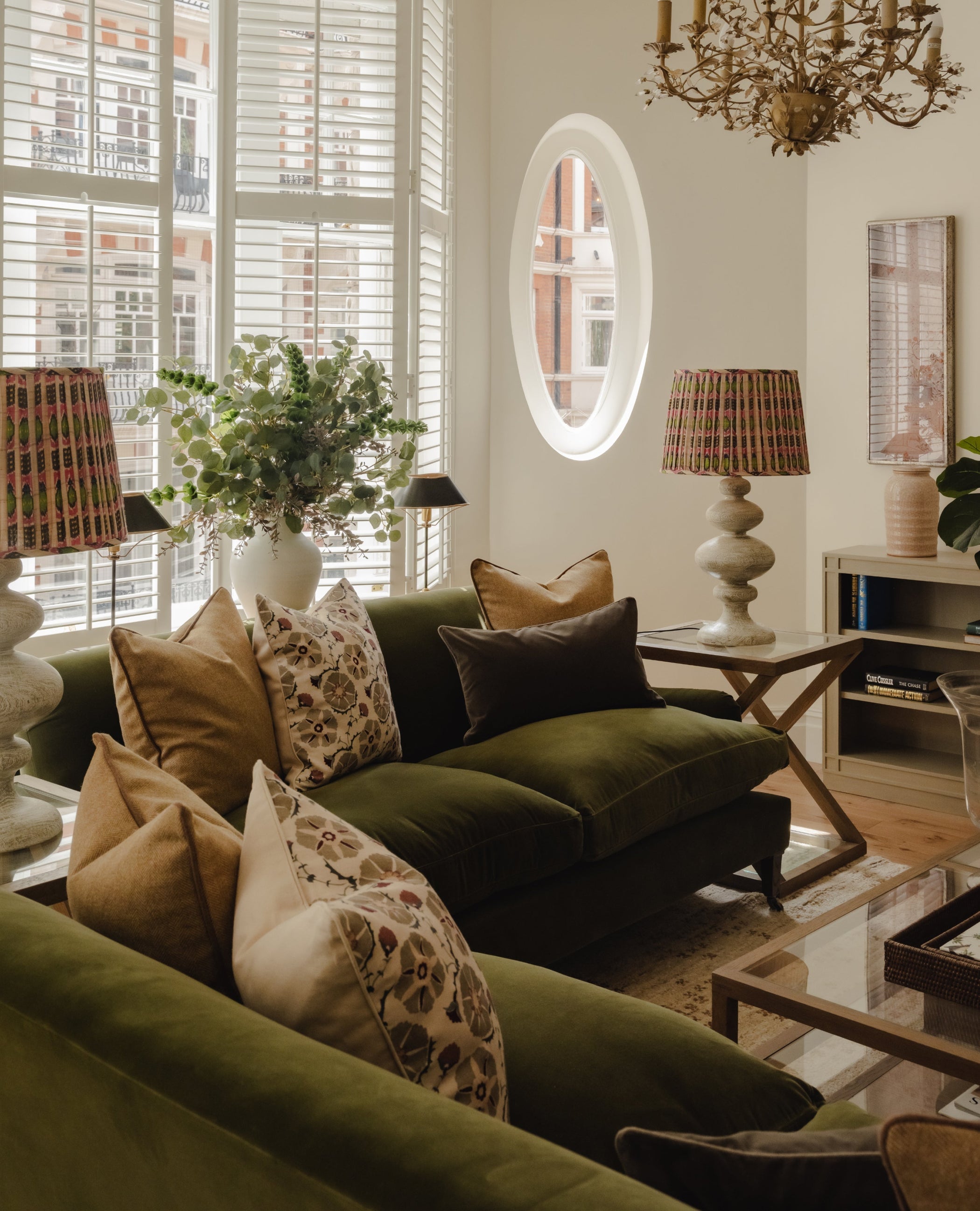
21 October 2025
A Tale of Two Apartments
Ten years after collaborating with our Interior Design Service, international client Mrs. Symth once again returned to OKA when it...

17 October 2025
How to elevate your seasonal entertaining at home
Sometimes, the smallest details can make the biggest difference, especially when it comes to welcoming friends and family over a...

